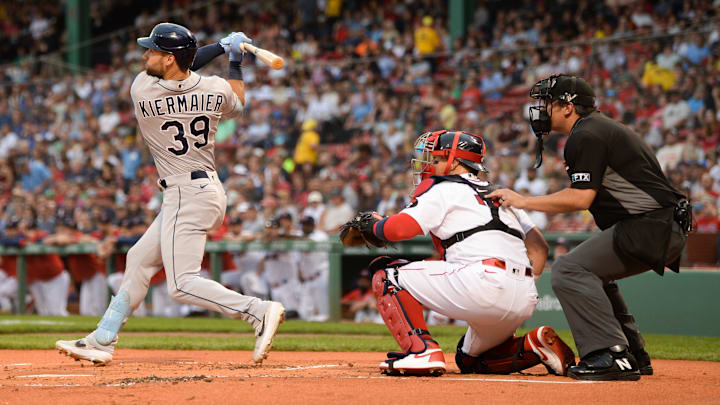The Toronto Blue Jays have joined the luxury tax club! With the confirmation that new centerfielder Kevin Kiermaier has agreed to a one year, $9M deal with the Jays, RosterResource puts the Jays’ 2023 competitive balance tax (CBT) payroll at $233, 607,143, or just above the $233M luxury tax threshold next year.
OFFICIAL: We’ve signed 3x Gold Glove Award Winner, Platinum Glove Award Winner, and Defensive Player of the Year Kevin Kiermaier to a 1-year contract.
— Toronto Blue Jays (@BlueJays) December 15, 2022
Welcome, @KKiermaier39 aka The Outlaw 🤠 pic.twitter.com/QEnFBxkpCL
Of course, the Jays aren’t done yet this offseason. After adding starter Chris Bassitt, reliever Erik Swanson and Kiermaier, they still need a power hitting, left-handed outfield bat as George Springer (elbow) and Kiermaier (hip) are both coming off surgeries and cannot be counted on for full seasons. Excluding the pandemic-shortened 2020, Kiermaier has averaged only 100 games per season since 2017; Springer enters his age 33 season only averaging 123 games over that same stretch.
Note that CBT payroll figure also does not include longer terms extensions to buy out the arbitration years of young, homegrown stars like Vladimir Guerrero Jr., Bo Bichette, Alejandro Kirk, Alek Manoah and Jordan Romano.
Let’s say the Jays were able to add an outfielder like Michael Conforto or Michael Brantley? Spotrac projects Conforto’s annual market value at $20.7M for 2023, which would take the Jays’ CBT payroll over $254M next year; Brantley is projected to make $8M in 2023.
Add in another starter like Nathan Eovaldi at $16.7M AAV or Michael Wacha at $12M AAV, and two more relievers like Andrew Chafin at $9M AAV and Michael Fulmer, and that total CBT payroll number could jump to $280M or more. That would rival the Yankees for the second highest CBT payroll next year, only trailing the New York Mets, who are on another level altogether at $315M and counting.
Team president Mark Shapiro recently stated that the CBT won’t dictate spending for 2023:
“It is not an obstacle for us. It will not limit us. We’ll have a budget... that we’ll limit to, but the CBT is not going to be what sets our budget, managing around that.”
So what sort of tax are we talking about? As per MLB, “those who carry payrolls above that threshold are taxed on each dollar above the threshold, with the tax rate increasing based on the number of consecutive years a club has exceeded the threshold. A team's CBT figure is determined using the average annual value of each player's contract on the 40-man roster, plus any additional player benefits.”
At $254M, the Jays would pay a 20% tax in their first year of overage, then 30% if they exceed the limit again in 2024. There’s also a surcharge for clubs that exceed the base threshold by $20M or more. As per MLB:
$20 ~ $40 million: 12% surcharge
$40 ~ $60 million: 42.5% surcharge for first year; 45% for each consecutive year after that.
Most likely Rogers is happy to stay in that $233 ~ $273M range that would trigger a 12% surcharge on top of the 20% tax on all overages. That would reduce by at least $20M when the Hyun Jin Ryu contract drops off the books next season.
As Blue Jays fans, we should all be very happy that Rogers, for the first time since buying the club in 2000, is finally spending on a payroll commiserate with the Greater Toronto Area and broader Canadian market; which is one of the largest markets in MLB after New York, Los Angeles and Chicago, but only supports one franchise, not two!
